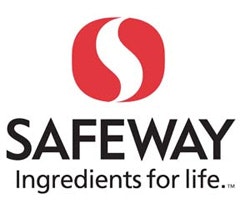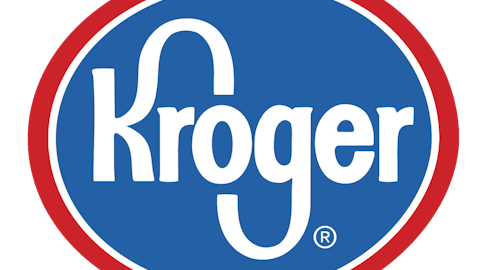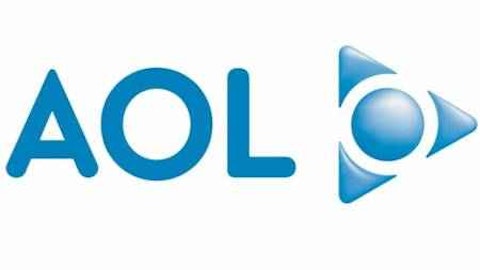I’ve previously pointed out the risks and costs of shorting. Most investors should avoid shorting. Yet I short stocks, so an explanation is required. Here goes: I short stocks as a hedge and to generate profits. But honestly, I also do it because I enjoy it. I caught the shorting bug early in my investing career. I love to study the “schemes” proposed by bad businesses. I like to see weak or poorly run businesses fail.
At the University of Virginia, I was a member of the undergraduate business school’s investment club, the McIntire Investment Institute. MII manages a real-money portfolio, which currently has nearly $600,000 in assets. It was initially seeded by John Griffin of Blue Ridge Capital, who was a major influence on the fund’s strategy (at least when I was a member). The strategy of the fund mirrored a hedge fund, because in addition to long equity investments, the charter allowed up to 10% of the fund to invest in short positions. Griffin had no day-to-day role in the student fund, but we all appreciated his investment philosophy, which revolved around “value-added research.” In other words, the best way to beat the market is to have an information edge, which can be garnered only through hard work.

But if Kmart’s failure brought me into the short-selling world, then it was Pegasus Wireless that confirmed my acceptance of it. In 2006, I stumbled upon Pegasus Wireless, a $500 million company with a sketchy history and very little earnings. Its CEO had a worrying track record, and I wrote critical articles about the company in June and July of 2006. I wasn’t surprised when the stock basically went to zero and its CEO was sent to jail for fraud. A fun and profitable short, to be sure!
I love studying scams
One of my favorite things about shorting is the story. I enjoy detective and espionage novels. I also like true-crime nonfiction. And the stories associated with some of the stocks that I’ve shorted are amazingly entertaining — better than any fiction. For a past example, check out KIT Digital. The company is currently in bankruptcy, but it was flying high when I wrote about it in April 2012. In short (forgive me), the company was a hype machine using capital to acquire questionable businesses, all under the guidance of CEO Kaleil Isaza Tuzman, the failed entrepreneur profiled in the documentary Startup.com.
That’s a historical example. A story that currently fascinates me is HCI Group Inc (NYSE:HCI). It’s a Tampa, Fla.-based property and casualty insurer. It insures homeowners in Florida, mostly against hurricane damage. It was started by a clever group of Florida businessmen, none of whom had any experience in insurance. Jim Cramer thinks the company is a buy (a definite “booyah!” according to his famously detailed analysis), and Fool Brian Pacampara thinks it’s poised to keep popping. I’m less enthusiastic. Yet I’m not sure the company will be able to survive a major hurricane. Weiss Ratings gave the company a “D” for financial strength. It has made some unorthodox investments for an insurer, including marinas, a restaurant, waterfront property, and a small software-development company based in India. It has disclosed several questionable related-party transactions, and a few key insiders have been selling. It’s a very interesting story, and I’ve enjoyed following it. Unfortunately, I don’t think it will work out well for shareholders.
I abhor bad business and corporate waste
I have a tremendous respect for free markets, capitalism, and business. Free enterprise has generated incredible benefits to society. Executives like Warren Buffett and Steve Jobs are heroes. But I’m not naive enough to think that every business or CEO is adding value to society. In fact, many are not, and they will eventually fail. And as an endorser of capitalism, it greatly offends me when companies are poorly run or are destroying shareholder capital. That’s exactly what is happening at Safeway Inc. (NYSE:SWY) and AOL, Inc. (NYSE:AOL).
Safeway Inc. (NYSE:SWY) is an ailing business. Its margins have declined for four straight years. Sales are stagnant. It faces tremendous competition. Employees, 80% of whom are unionized , are generally unhappy with the company: According to more than 600 reviews posted on Glassdoor.com, only 37% of employees would recommend it to a friend. To put that in context, 74% of Whole Foods Market employees would recommend the company to a friend, and 75% of Wegmans employees would recommend their employer to a friend.
Safeway Inc. (NYSE:SWY)’s employees also don’t take such good care of their customers, according to survey data by the American Customer Satisfaction Index (not to mention my experience). In 2012, Safeway Inc. (NYSE:SWY) received the second-worst customer satisfaction score among all the supermarkets tracked. Only Wal-Mart fared worse. My mother, for one, would rather drive 20 minutes to the nearest Wegmans than patronize the Safeway just five minutes from my parents’ house. Wegmans’ prepared foods, deli items, and overall selection are better, and the employees are nice and helpful. For her, it’s worth the extra drive, and I know many other people feel the same.
Another challenge for Safeway Inc. (NYSE:SWY) is its obligations on and off the balance sheet. The company has nearly $6 billion in debt, and last year analysts at Credit Suisse estimated that Safeway’s multi-employer pension plans were underfunded by $7 billion before tax. For all those reasons, I’d be shocked to see Safeway Inc. (NYSE:SWY) succeed and grow over the next five to 10 years. Better businesses will step in to serve consumers — Wegmans, Trader Joe’s, and Whole Foods Market among them.
Meanwhile, AOL, Inc. (NYSE:AOL) has a flawed strategy. Its goal is to use the declining cash flow from its dial-up business to invest in Internet content that can be monetized via advertising. Unfortunately, the economics of AOL, Inc. (NYSE:AOL)’s ad-based content strategy don’t work. The company’s Brand Group, which houses its Internet properties such as The Huffington Post, lost $33 million last year and $48 million in 2011. Internet advertising is a brutal business, as the supply of content seems to continually outpace demand for advertising. The companies that succeed in Internet advertising, like Google, are not generally content-producers; they are technology and distribution platforms. Nevertheless, AOL, Inc. (NYSE:AOL) CEO Tim Armstrong seems dead set on this foolish strategy. In the end, his hubris will benefit neither the company nor its shareholders.
Foolish bottom line
Shorting stocks can be fun, but it’s a highly risky strategy. Investors should think twice before borrowing shares to sell short.
The article Why I Short Stocks originally appeared on Fool.com and is written by Brendan Mathews.
Brendan Mathews owns shares of Google. He is short shares of Safeway, AOL, and Homeowners Choice. The Motley Fool owns shares of Google and Whole Foods Market.
Copyright © 1995 – 2013 The Motley Fool, LLC. All rights reserved. The Motley Fool has a disclosure policy.




